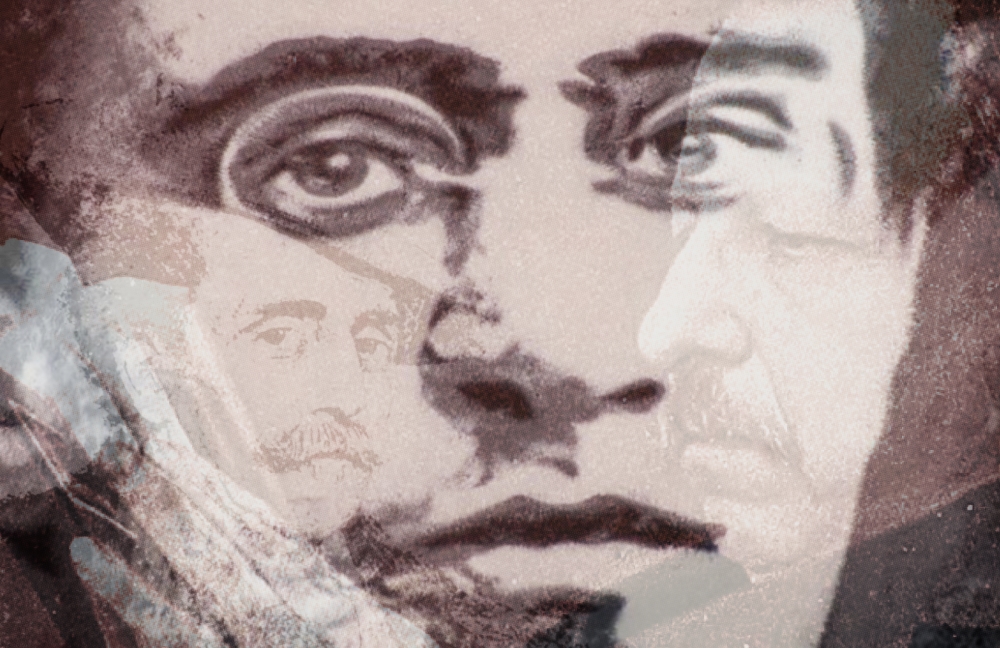
A Look at the Last Letters Exchanged Between Antonio Gramsci and Palmiro Togliatti
( PDF Version )
Preface
Antonio Gramsci and Palmiro Togliatti were both founding members and leaders of the Italian Communist Party (PCI); prominent figures whose fame was not limited to Italian society but had global dimensions: Gramsci for his long imprisonment in the clutches of Mussolini’s fascist regime but certainly more importantly for the creation of his monumental, enigmatic work during this period, The Prison Notebooks; and Togliatti for his role and position, both as the head of the Italian Communist Party and, in the Comintern.
What you will read in this collection are the last letters exchanged between Gramsci and Togliatti in October 1926, and a relatively long text by Togliatti titled “Guidelines for the Study of Russian Problems,” written in April 1927.
The importance of these texts, and indeed the necessity of revisiting them here, is that through these historical documents, we can become better acquainted with Gramsci’s mode of thinking and methodology and evaluate it, albeit briefly. Moreover, although these texts cannot be considered a complete reflection of the intellectual evolution of these two Italian thinkers, nonetheless, clear signs of and the grounds for the later developments of their thoughts (both Gramsci’s liberalism and Togliatti’s “Italian road to socialism”) can be traced in them. In this preface, we will pause solely on one aspect of Gramsci’s mode of thinking and methodology, which is related to the first text.
The first text is a letter that Gramsci wrote on behalf of the Politburo of the PCI to the Central Committee of the Communist Party of the Soviet Union (CC-CPSU) sent to Togliatti, who was then in Moscow, so that it would reach the CC of the Party. The second text is a letter written by Togliatti in response to the views expressed in Gramsci’s letter. And the third text is a reply from Gramsci to Togliatti’s letter. The fourth text, however, is an article that Togliatti published in a periodical called “The Workers’ State”[*] which is in fact a response to the views existing among the communist parties in the West, including Gramsci’s views, on some internal issues in the Communist Party of the Soviet Union, and specifically, the formation of the opposition and the split in the CC of the CPSU.
In his first letter, Gramsci, while emphasizing the importance of the role of the Communist Party of the Soviet Union in the revolutionary movement of the international proletariat, argues that any division and crisis in this Party would destroy revolutionary enthusiasm and morale not only within communist parties, but also among the broad masses of workers in other countries, and therefore, must be prevented at all costs.
Needless to say, the essence and importance of the issues that Gramsci addresses in this letter, as well as the sincerity of his concerns are unquestionable and by and large acceptable. But what is questionable and worthy of reflection is the way Gramsci views and approaches these issues. Gramsci’s view of the existence of the Party is a mystical one, and his approach as to how to ensure unity within the Party is an ethical one.
In order to resolve the crisis in the Soviet Communist Party at that time, Gramsci calls on the majority of the Central Committee in this letter to, as the saying goes, be magnanimous and not “crush” the opposition in the minority, while at the same time, he also warns the opposition that: you have been “among our teachers” and since “unity within our fraternal Party in Russia is essential for the progress and victory of the revolutionary forces of the world… every communist and internationalist must be ready to make the greatest sacrifices,” therefore (according to Gramsci) it is imperative that the parties moderate their contradictions with forgiveness and sacrifice and, for the sake of the interests of the proletariat, overcome these contradictions through compromise.
Gramsci’s grasp of the existence of the Party and of the relations between its internal components is idealist. It is as if we are dealing with a homogeneous totality (the Party) whose unitary substance and essence are infused in all its derivatives (Party members), in other words, as if the Particular is derived from the Universal; thus, the derivatives are all “of the same essence.” However, in reality, the opposite is the case. That is, the Party is a social construct which is the creation and outcome of its components, and in fact, it is the members of the Party and their views and actions that determine the identity and essence of the Party, and not vice versa.
Let us put this philosophical abstraction on the ground of facts to make the matter a little clearer. The fact is that the Party and the intra-Party struggles are, indeed, a reflection of the class struggle within the Party, and that these internal struggles within the Party are themselves a reflection of the process of class struggle in wider society. Therefore, we must ask whether it is possible to carry out class struggle by appealing to morality? The history of class struggles itself proves otherwise. In fact, we must stipulate that class struggle is not a moral struggle, nor is the ideological struggle that stems from it a moral struggle, although the opposing sides will always leave the stamp of their own particular moralities. For example, we know that the Bolsheviks did not resort to moral advice in response to the incorrect and deviant positions of the Mensheviks, nor did they modify their positions in order to overcome their differences with the Mensheviks, but, on the contrary, they stood up to them and, through criticism and exposure, smash the Mensheviks’ views and remove them from the path of struggle. In principal, it must be emphasized that ideological struggle cannot be reduced to a moral struggle. This is, however, precisely the position and behaviour that Gramsci adopts.
Gramsci, as Togliatti also suggests in his letter to him (the second in this series), presents a contradictory position regarding the crisis that has arisen at the core of the Party. In the sense that, on the one hand, he considers the opposition “primarily responsible for the present situation,” but at the same time, he is unwilling to differentiate between the majority of the Central Committee and the minority opposition, and their positions, thus evading to defend the correct line against the incorrect line. In other words, he adopts an ambivalent position in this regard. This ambivalence also appears later in the Prison Notebooks—a disorder that has been appropriately referred to as “antinomy.” And this antinomy, in my opinion, is largely due to the oscillation between Hegelianism and Marxism, an oscillation whose thorough and comprehensive explanation requires a separate and independent article.
A comparative study of these four texts will exhibits various aspects of the above claims, as well as Gramsci’s other questionable viewpoints and positions. Interestingly, (as far as I have found) only two of the four texts in question are readily and abundantly available in English, and they are Gramsci’s letters. The two texts belonging to Togliatti, included in this collection, are only available in Italian, and that too, in a hard to reach and rather rare manner. This, regardless of its reasons, and whether intentional or unintentional, is wrong and reprehensible. Because the lack of access to all four texts, and consequently the inability to study them all together, casts a shadow on the whole truth and, as a result, leads to a fragmentary understanding.
And lastly, it is necessary to clarify that all four texts and all footnotes are taken from their Italian versions on the website below. The footnotes for Gramsci’s first letter were provided by the administrators of the aforementioned website, but the footnotes for the fourth text are from the author of the article, Togliatti himself. Note that the administrators of the aforementioned website, from their own perspective and addressed to the Italian-speaking audience of the website, have also written an introduction to these texts, which I have not translated, but is available at the link below.
A. Behrang
March 2025
https://www.associazionestalin.it/gramsci_togliatti_PCUS.pdf
* Togliatti was the founder and editor of the periodical “The Workers’ State” which he relaunched clandestinely in Paris on March 1, 1927. He supervised it for 12 years, until August 15, 1939. It indirectly played a role as the intellectual guidance for the Italian Communist Party.
( PDF Version )



